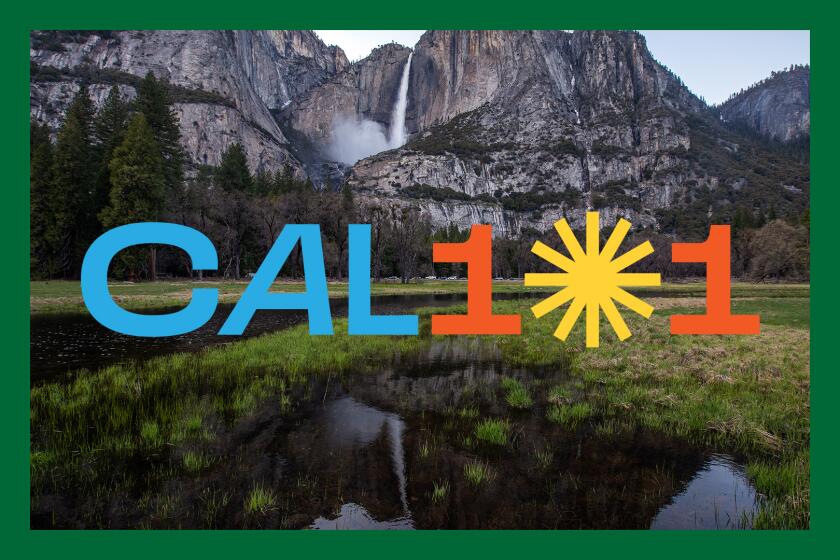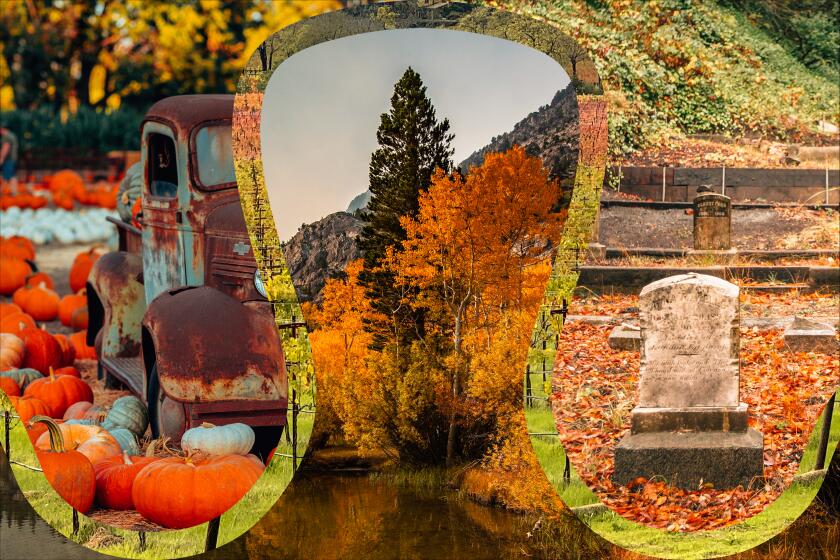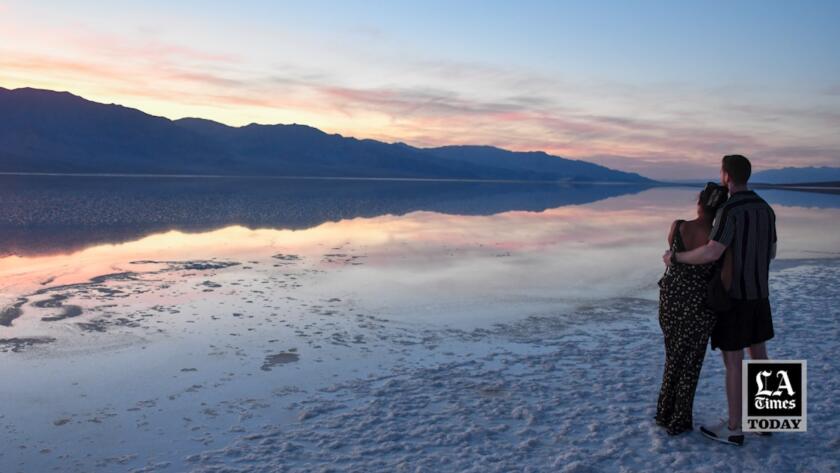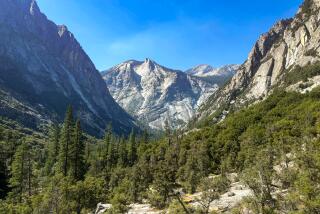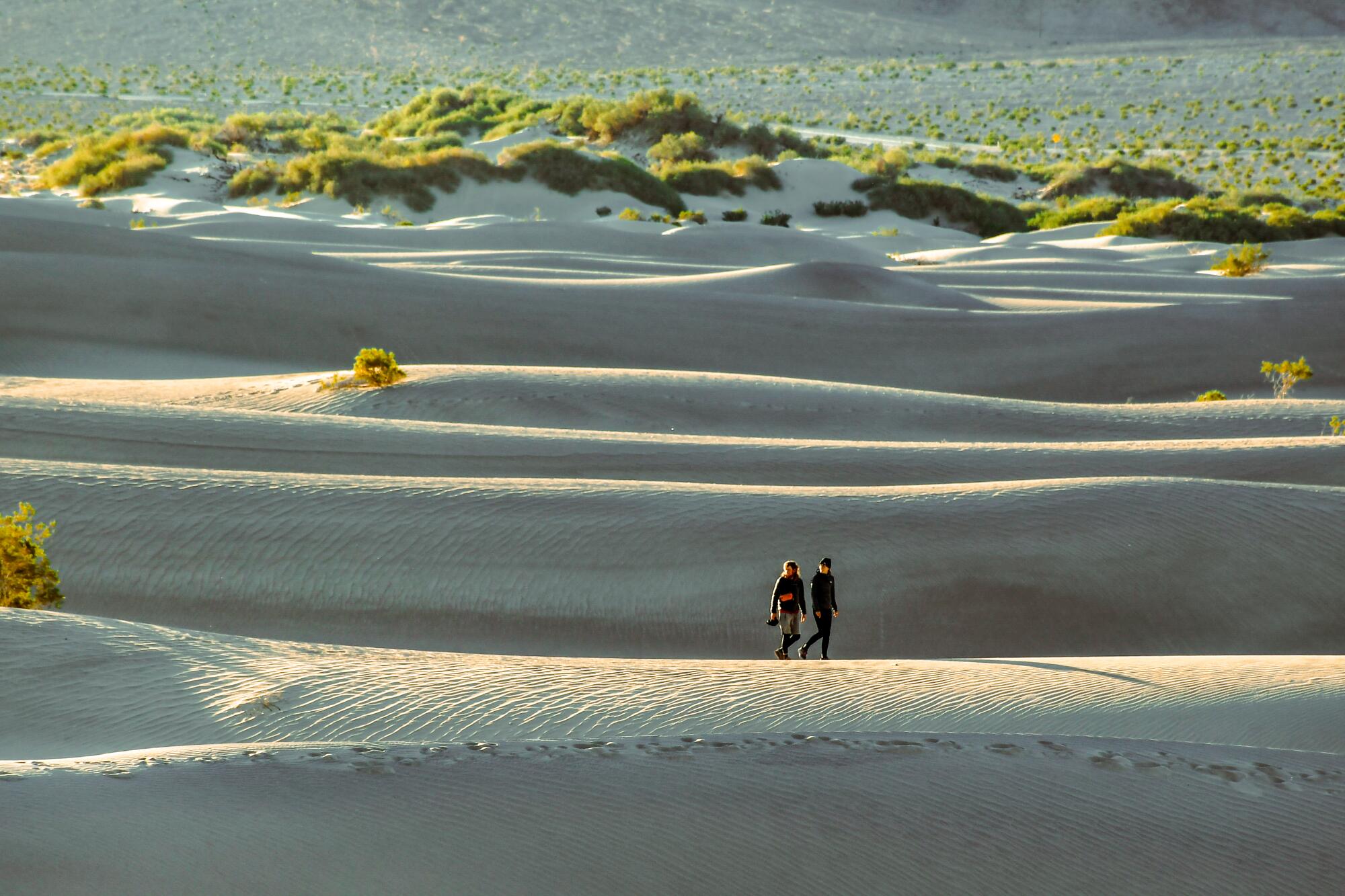
- Share via
Death Valley is still wet. And only a fortunate few seem to be getting the best of it.
Two months after a storm that dropped a year’s rainfall in a single day, flooding roads, destroying trails and closing down the park, the national park’s Oct. 15 reopening revealed a strange place made stranger.
The famously flat and dry Badwater Basin now is home to a sprawling but temporary lake, visible from water’s edge and 5,575 feet above at Dante’s View.
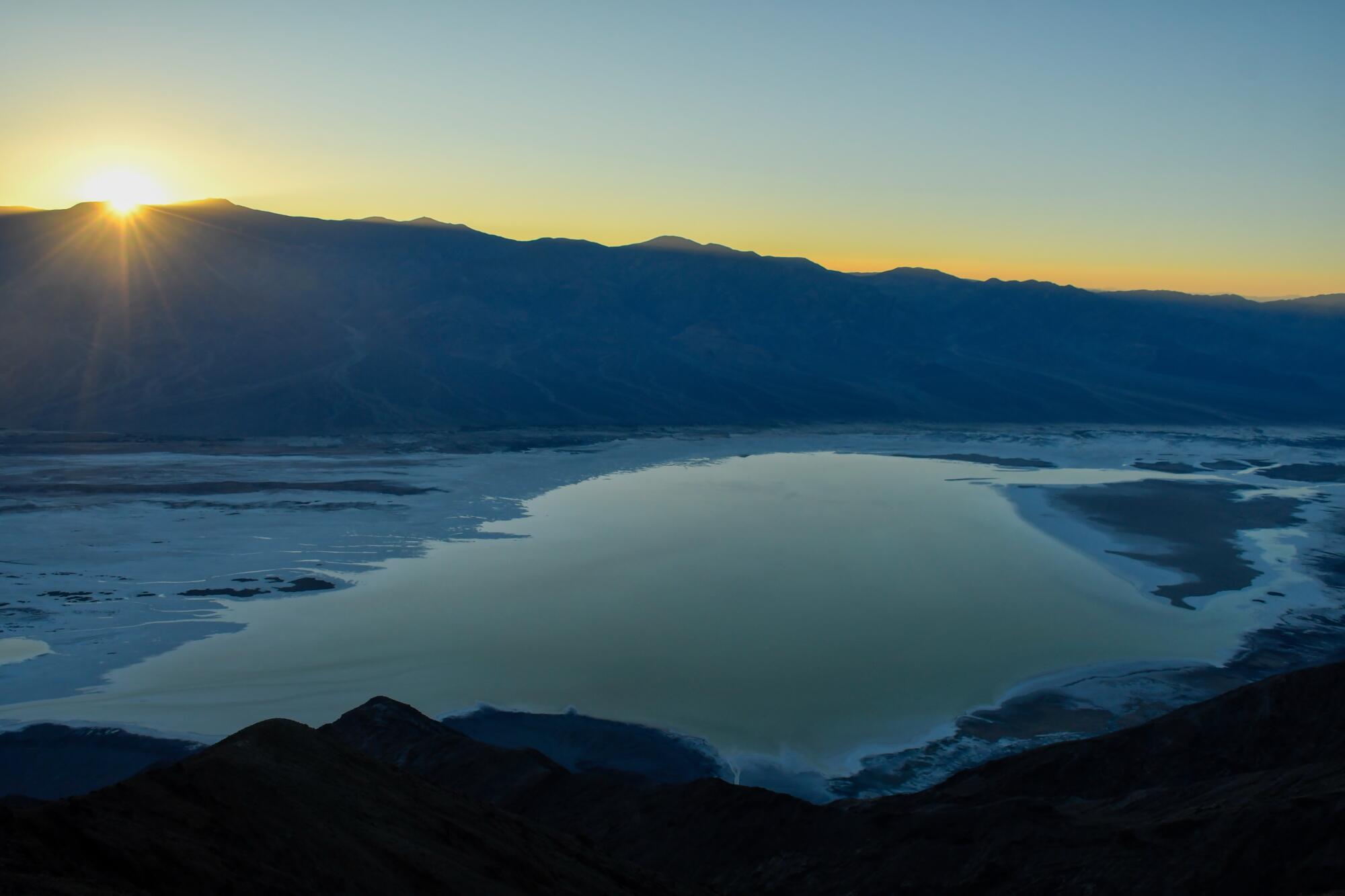
Between sand dunes at Mesquite Flat, you might stumble on a puddle or a pond. In Mosaic and Golden canyons, where floodwaters surged in August, scattered boulders and silt have reshaped the narrow passages, hinting at violence just concluded. Across the plains and slopes, you see more green than usual and sometimes yellow and orange wildflowers, apparently blooming out of seasonal confusion.
Rangers say they can’t be sure how long the lake will last, and it’s unclear when the park’s many still-closed roads and other areas will reopen. But those travelers on the scene in recent days — some savvy, some lucky and most, it seems, from abroad — have half a dozen striking spectacles to choose from. They also have a few challenges to reckon with, including $8 gas at Furnace Creek. (Don’t worry. Stovepipe Wells is more than $2 cheaper.)
“We were very lucky,” said Todd Robertson, 35, of London, walking the Badwater shoreline in the aftermath of a spectacular sunset.
“I’ve never seen anything like this,” said Klaus Meyer, 32, of Germany’s Black Forest region, hiking through Mosaic Canyon.

“Twelve-hour days. Six days a week. Good money,” said Jorge Santiago, 30, of Reno. He was working as a flagman near Zabriskie Point, where road repairs require traffic control.
Crucial stretches of State Route 190 and Badwater Road, which connect many of the park’s most popular sites, are open. Still, drivers from Southern California must enter the park by way of Lone Pine, using highways 395 and 136, and will face two road-repair stops on the way to Furnace Creek, with delays of up to 30 minutes each. There’s a third checkpoint between Furnace Creek and Dante’s View. (Check the park website before visiting.)
Once you’re in the park, trails are uncrowded, traffic is scant, roads are freshly scraped (through gravel patches remain) and occupancy is low in hotels and campgrounds at Furnace Creek and Stovepipe Wells Village. Many campgrounds are open. High temperatures are expected to dip from about 100 Friday to the high 80s for most of the next week.
A beach made of kaleidoscopic pebbles. A desert roadhouse with a world-class license plate collection. Medleys of irresistible waterfalls. The last grand train station in America. If you’re looking for the gold of the Golden State, let us be your guide.
A surprise lake at Badwater Basin
Badwater is the lowest spot in the continental U.S., 282 feet below sea level, and it’s usually a vast flat expanse of salty, crusty playa that was once a lakebed.
Sometimes there’s a little water near the boardwalk that the National Park Service has built near the parking lot, but usually there’s nothing you could call a lake. Now there’s more water than rangers have seen in 18 years, and the result is a glassy surprise that ripples in the breeze.
Todd Robertson and Karina Shah, both from London, were there shortly after sunset Monday, watching the sky darken and the lake’s colors change.
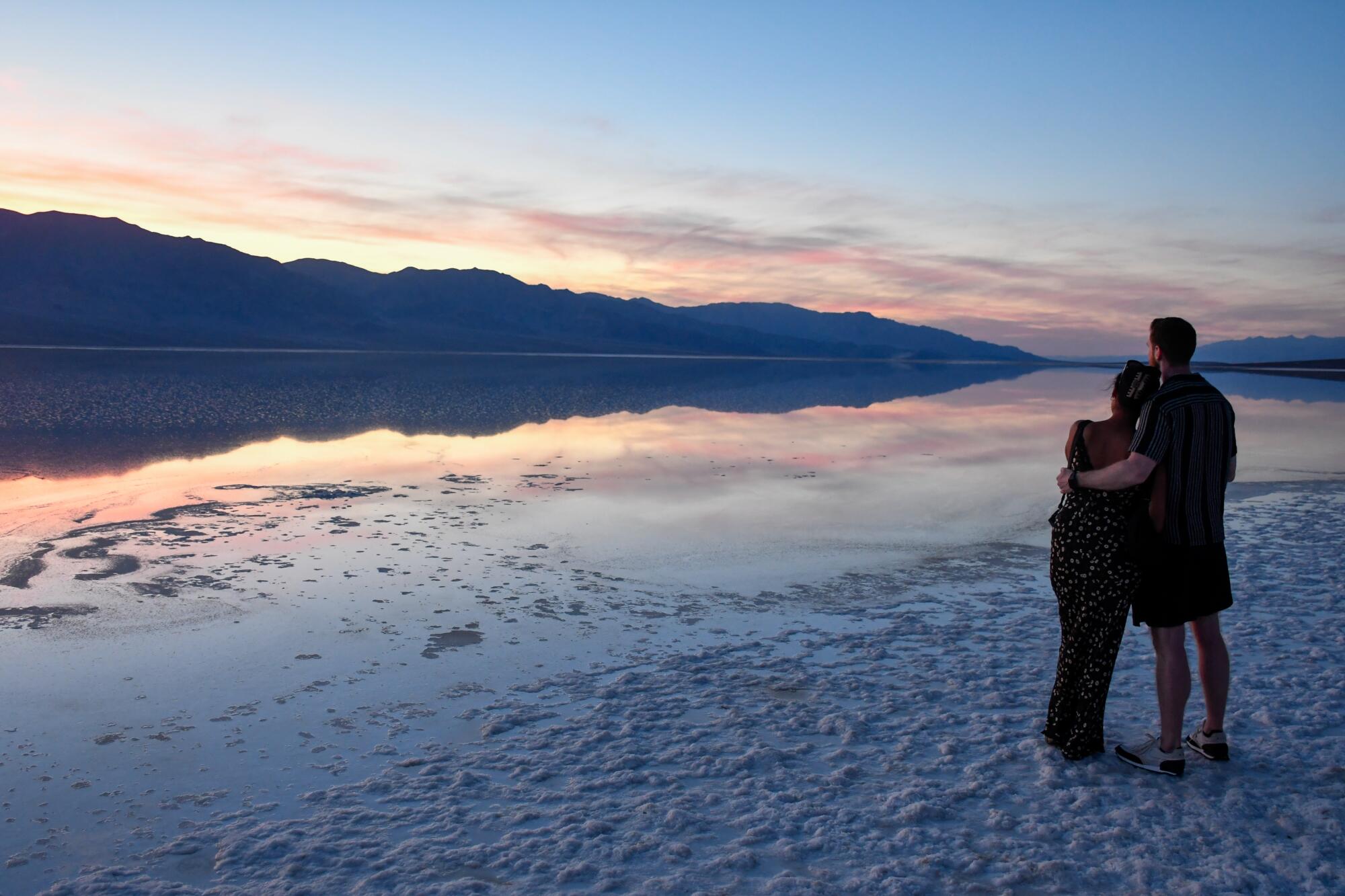
“We’ve been waiting 10 years to come and do the national parks,” Robertson said. “We were in Zion yesterday and the Valley of Fire en route to here. We were praying all the way that this would be open.”
And then, he said, “Last night when we checked in [at the Ranch at Death Valley in Furnace Creek], they let us know it was wet.”
Bill Altman, 68, was present for the same sunset, because he’d done plenty of homework.
“I’m from Maine and I’m doing a national park tour. Started at the Badlands in South Dakota. Been driving around for a month and a half already. I knew about the rain, knew about the closure, knew about the water,” he said. “I come every year and I’ve never seen the lake. ... Pretty wonderful.”
Park ranger Matthew Lamar said rangers haven’t measured the depth of the lake, but “a little over 2 feet [at its deepest point] is what we think. That’s what it was in 2005, the last time there was a significant lake there.” Lamar noted that the park, besides being the hottest place in the world, also has the highest evaporation rate, so the lake may dry up within a few weeks. “It depends in part on temperatures.” In the meantime, he said, rangers in the Visitor Center are stressing to visitors that “this is really special.”
Mesquite Flat: ‘The flowers are really confused’
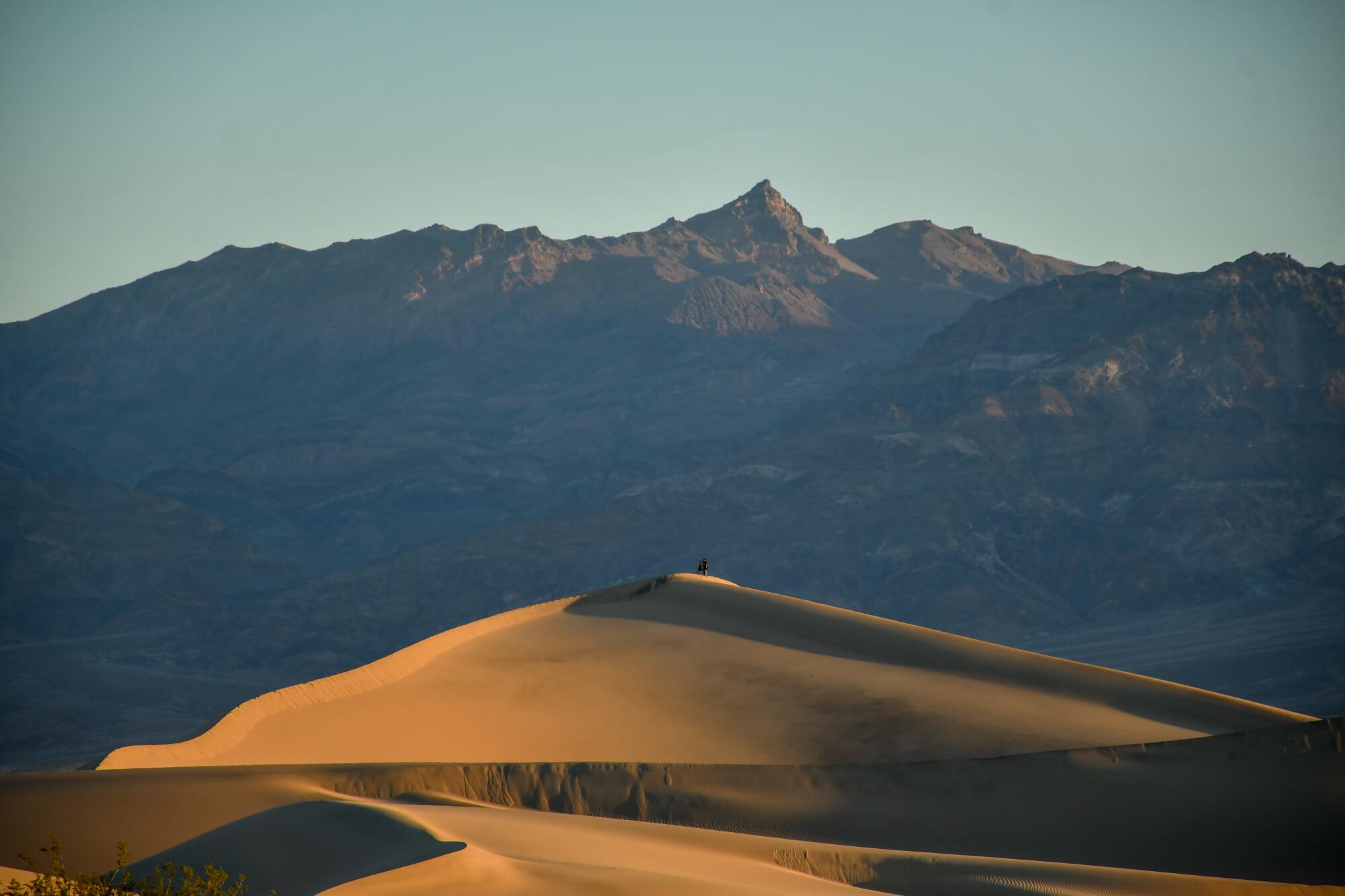
For those willing to rise before dawn, it’s always been a treat to see the sun rise above the Mesquite Flat Sand Dunes, casting golden light on all that sand and the surrounding mountains. In recent days, that panorama has been punctuated by at least a few enduring puddles and one pond, which I found about half a mile from the Mesquite Flat parking lot.
More than once, I spotted a faint, flitting motion on the pond’s surface. A mosquito? In Death Valley? Maybe so. Ranger Shelby McClintock later told me that since the summer rain of 2022, “There’s been an uptick in insects.” And in some spots, she added, “The flowers are really confused, and they’re in bloom.”
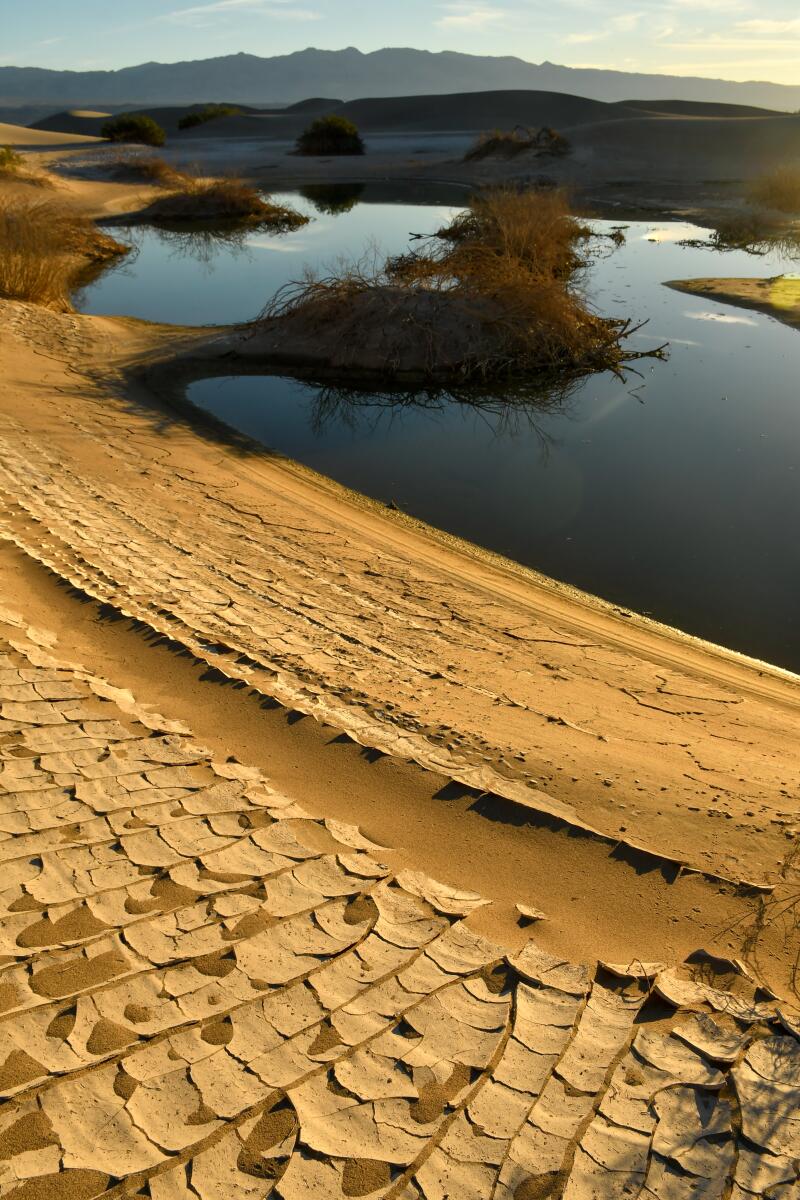
Mesquite Flat Sand Dunes, Death Valley National Park. (Christopher Reynolds / Los Angeles Times)
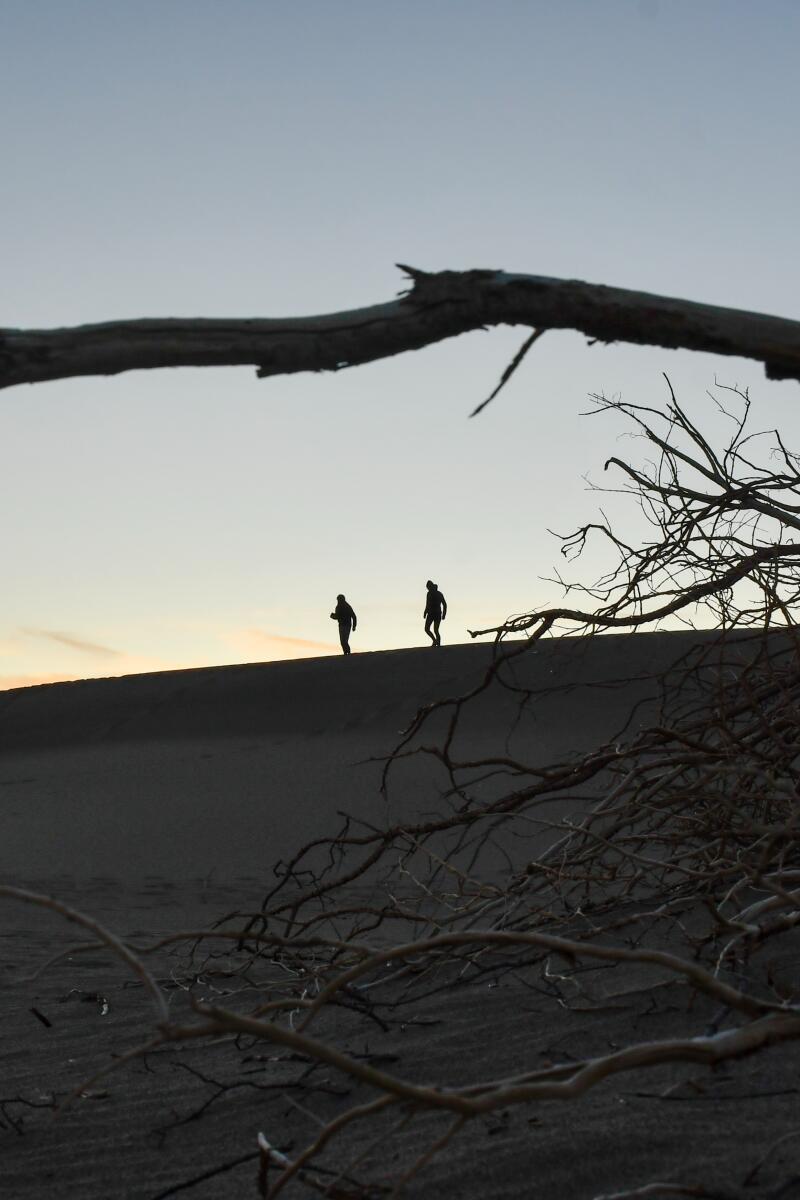
Mesquite Flat Sand Dunes, Death Valley National Park. (Christopher Reynolds / Los Angeles Times)
Meanwhile, on the dunes, the sun rose and colored the mountains. The temperature, about 70 at 7 a.m., began its climb to the 90s. On a neighboring dune, Klaus Meyer, 32, and girlfriend Leo Fischer, 33, were taking their time.
Meyer had just finished his last segment of the Pacific Crest Trail in the Sierra near Mammoth. Fischer had come from Germany to join him. As they roamed the dunes, Fischer spotted a set of sidewinder tracks, a repeating pattern that they would never have expected a rattlesnake to leave in its wake. Later they hiked Mosaic Canyon, where mud flows and flung stones have raised and rearranged the canyon floor, scraping and polishing walls that were always famed for their striations and markings.
“I’m an environmental scientist and all this geological stuff is great for me. So it was sort of an obvious step to come here,” Meyer said. Still, “It was definitely a surprise,” he said.
“Now,” added Fischer, “we have five days until your visa expires.”
Mystery spectacles at Zabriskie Point
From Zabriskie Point, visitors can survey a wonderland of rock formations and alluvial flow, and it’s just about impossible to tell what happened last week from what happened last century. Visitor Michaela Reichel, 33, from near Frankfurt, Germany, had come with a friend on a San-Francisco-to-Las Vegas-and-back itinerary they’d planned in spring.
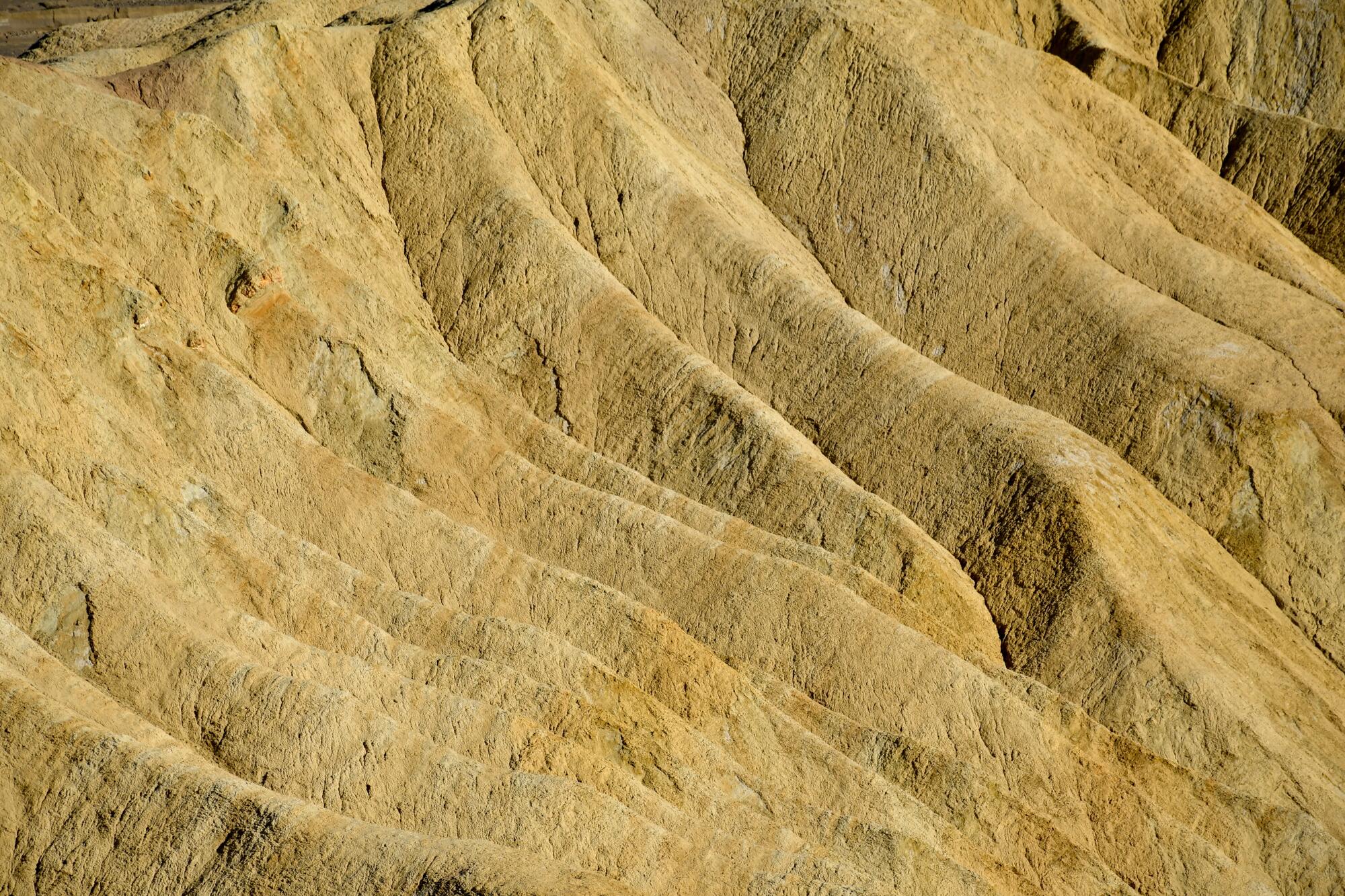
“We didn’t know about the closure and reopening,” Reichel said. Looking into the distance from the point, they could see shimmering along the desert floor at Badwater. But was it a mirage or real water? They debated until a third party settled the question.
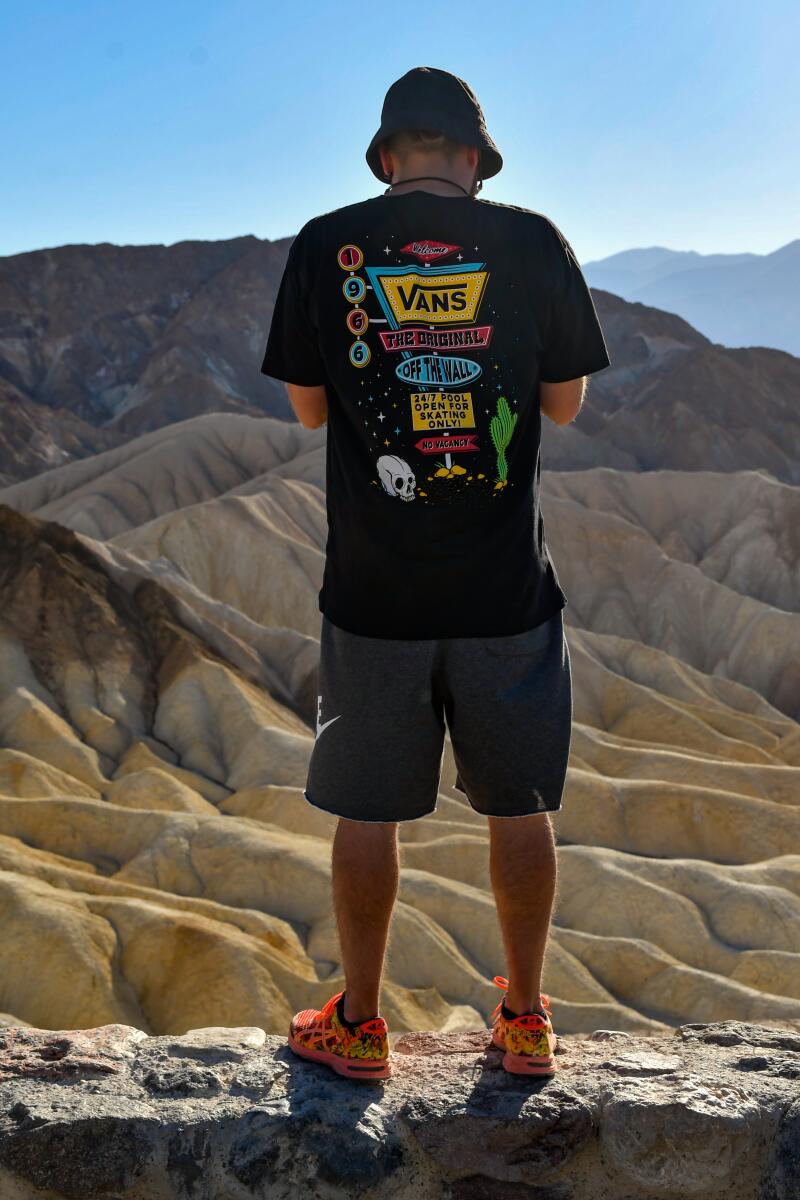
Zabriskie Point, Death Valley National Park. (Christopher Reynolds / Los Angeles Times)
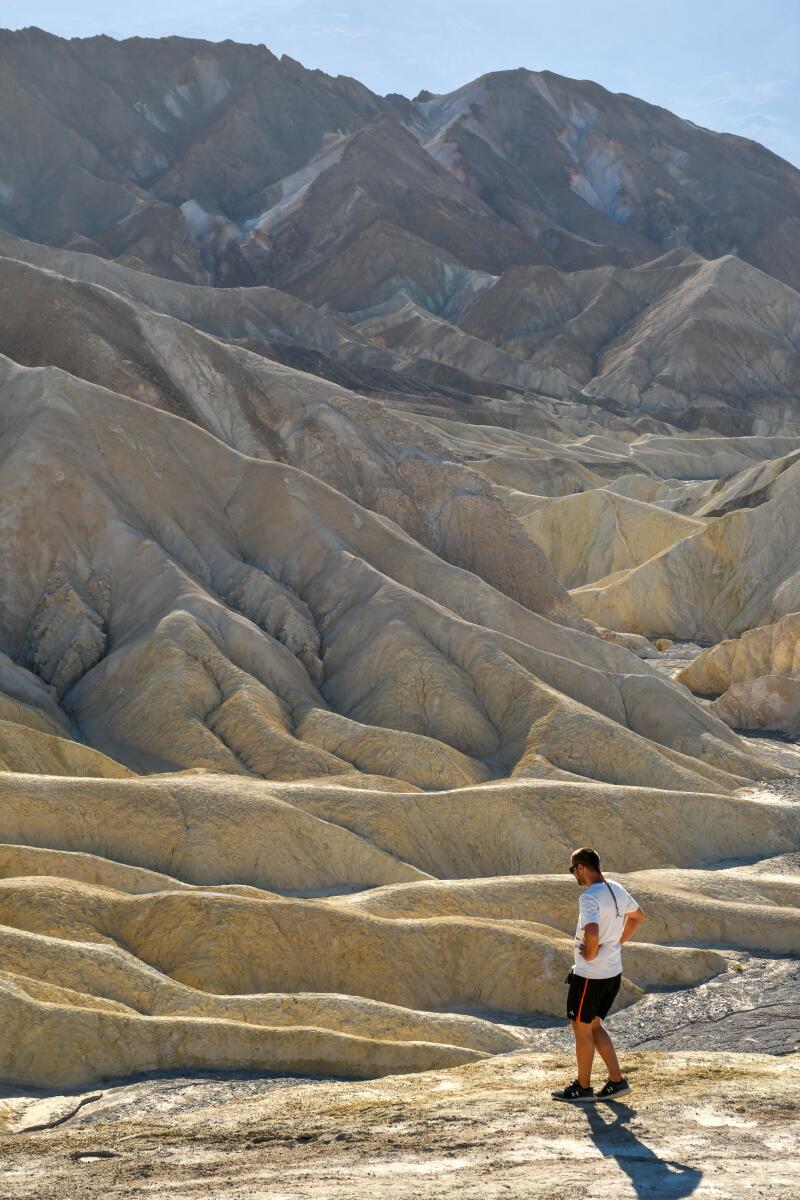
Zabriskie Point, Death Valley National Park. (Christopher Reynolds / Los Angeles Times)
Dante’s View, a spot to take in the park’s recent transformation
“We expected it to be really crowded up here,” said Fredy Koepf, puzzled.
He and his wife, Karin Koepf, had little company as they stood atop the ridge at Dante’s View, looking down at the floor of Death Valley more than a mile below.
The centerpiece of that view was a blue-green blob that stretched for miles — the lake at Badwater. When the sun dipped beneath the mountains and the glare subsided, the lake’s colors deepened and the unlikeliness of it all seemed to double.
“We’re from Switzerland,” Fredy Koepf said. “We’ve been visiting U.S. national parks for decades.” But they had never come to Death Valley because they were traveling with kids in summer, he said, and wanted no part of that profound desert heat. Now, with their kids grown, the Koepfs had taken an extended autumn vacation to see the West, including Yosemite.
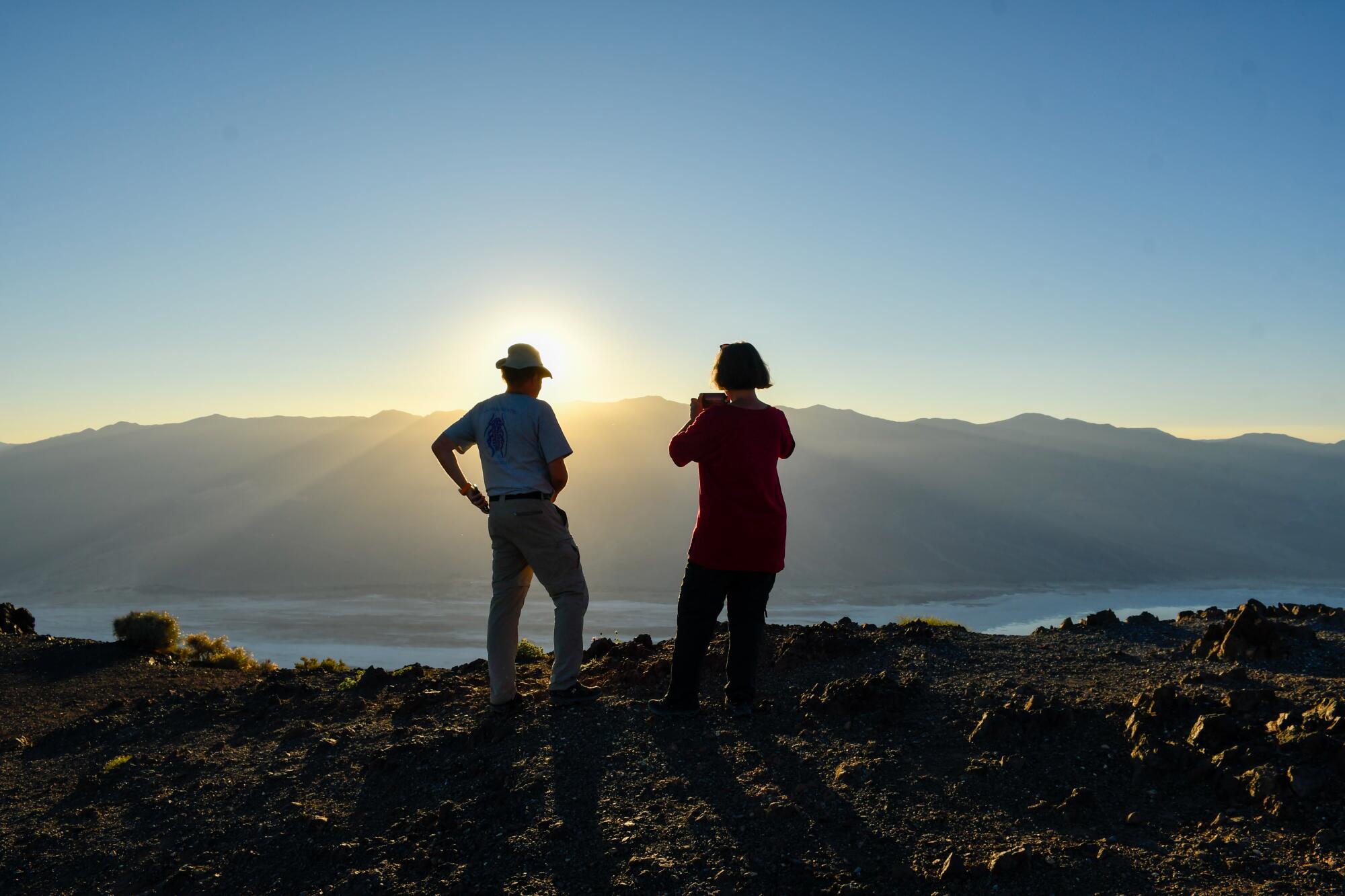
They knew Death Valley had been closed but saw that it was likely to reopen, so they spent a few days exploring the lakes and early autumn colors of the Eastern Sierra — a happy surprise, said Karin Koepf, because “we didn’t know fall is like this here!”
Once Death Valley opened on Sunday, Fredy Koepf said, “We were here Monday. It was perfect. ... It’s amazing.” And in the narrow canyons, “You can really imagine the force of the water. ... We have friends in San Diego. They’re too busy. We keep sending them pictures.”
Fall is here. Try these road trips around California with destinations for picking pumpkins, peeping leaves, seeing spooky sights and more.
It’s a spectacular time to visit Death Valley
The Monday sunset at Badwater had been so spectacular that I wanted to see it in reverse. So I went back for Wednesday sunrise.
Arriving in the predawn moments, I found John Osborn, 61, from outside Portland, Ore., pointing his camera across the water, along the water’s edge, then across the water again.
“This trip was planned two years ago,” he said, then paused to explain: “I went through cancer treatment two years ago.”
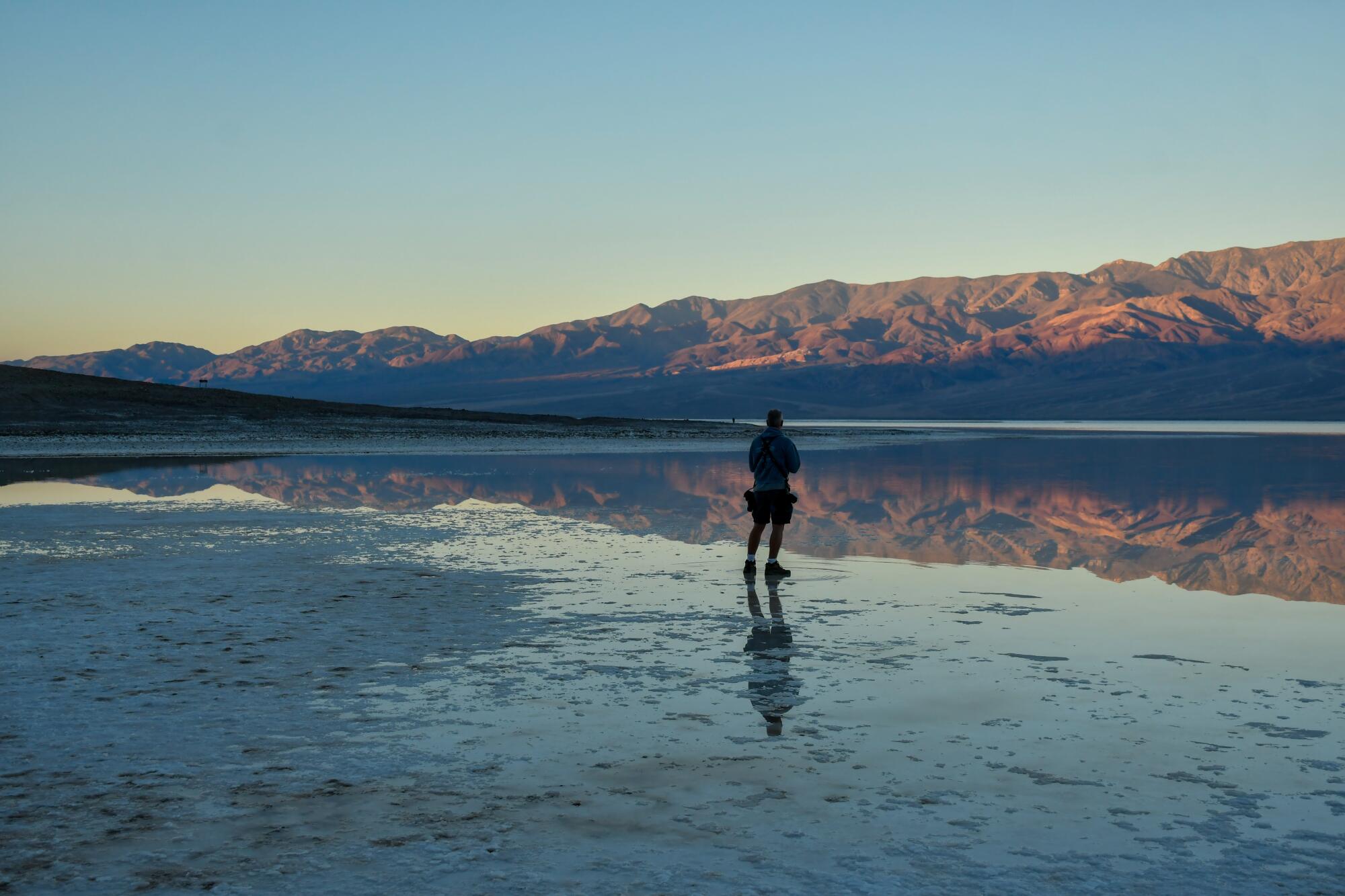
Since those days, he said, “I’ve got a long list” of places to see. When he got word of the park’s reopening, he started driving south, stopping along the way in Inyo County’s White Mountains to see the bristlecone pines, some of the oldest living organisms on Earth. He checked into the hotel at Furnace Creek, got up early and drove 18 miles to Badwater to watch and snap the sun come up over the slowly vanishing lake.
“I lived in Southern California for 18 years and never came here,” he said.
Travel tips: hotels, food and, yes, those gas prices
Death Valley National Park includes lodgings and restaurants at Furnace Creek, Stovepipe Wells and Panamint Springs, with hotel prices starting between $100 and $200 nightly.
Since the park’s partial reopening Oct. 15, many services have been limited, in part because of staffing shortages.
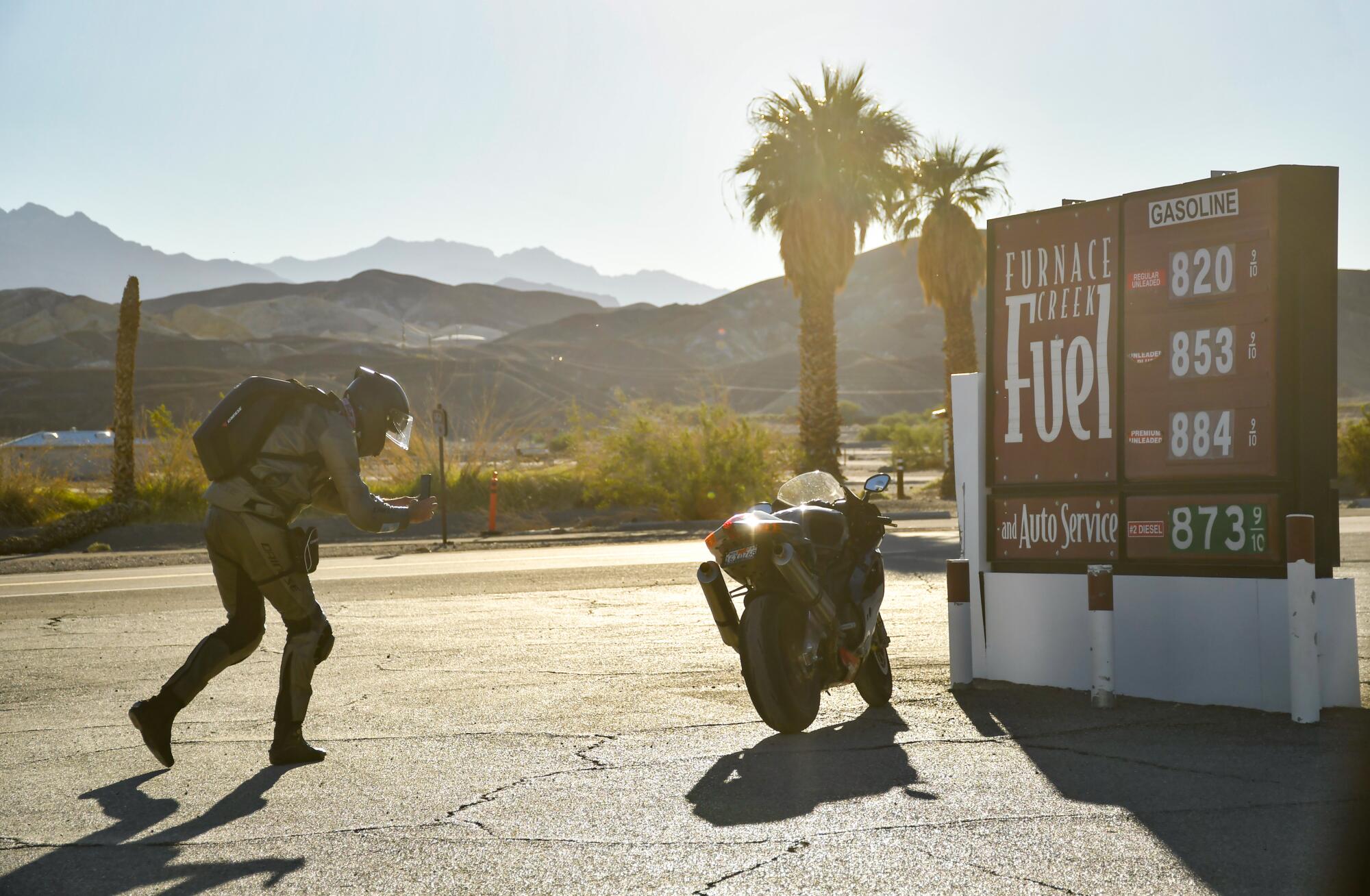
The largest number of visitor accommodations can be found at a complex in Furnace Creek known as the Oasis at Death Valley and run by the Xanterra management company. The Oasis, which is relatively close to Zabriskie Point and Badwater Basin, includes the Ranch at Death Valley hotel and the more upscale Inn at Death Valley. The breakfast buffet at Furnace Creek’s 1849 Restaurant costs $21 for adults.
The park’s Stovepipe Wells Village, which includes lodging, restaurant, store and gas station about 25 miles northwest of Furnace Creek, is close to the Mesquite Flat Sand Dunes and Mosaic Canyon. The breakfast buffet price is $9.50.
The Furnace Creek gas station, managed by Xanterra, was charging $8.20 per gallon of regular gas when I arrived — a number so high that I saw a motorcyclist pull out his phone to take a photo after gassing up.
When I asked the attendant about the price, he said that because of the road closures, “Our fuel delivery company has to drive an extra five hours to get here. So most of (the high prices) is extra fuel delivery cost.”
Meanwhile, at the park’s Stovepipe Wells Village gas station 25 miles away (and under different management), the price was $5.79 for regular.
- Share via
Watch L.A. Times Today at 7 p.m. on Spectrum News 1 on Channel 1 or live stream on the Spectrum News App. Palos Verdes Peninsula and Orange County viewers can watch on Cox Systems on channel 99.
More to Read
Sign up for This Evening's Big Stories
Catch up on the day with the 7 biggest L.A. Times stories in your inbox every weekday evening.
You may occasionally receive promotional content from the Los Angeles Times.
